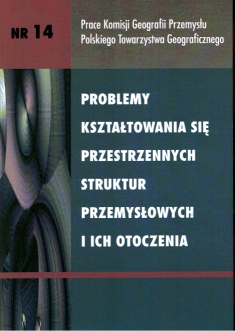The role of foreign direct investments (FDI) in establishing knowledge economy in the Czech Republic: the case of knowledge-intensive business services
DOI:
https://doi.org/10.24917/20801653.14.3Keywords:
FDI, knowledge, Czech Republic, knowledge-intensiveAbstract
For the location of new activities in CEE, a helpful factor was sobering up of the European companies from the Indian euphoria. Because of different, lower-level property rights, difficulties in intercultural communication and, very often, only superficial knowledge of the topic, the companies stopped outsourcing of some more sensitive activities to India or China.
From the global point of view the “CEE miracle” is hard to compare with Asia, if in 2006 the CEE region received only a little more than $2B, in comparison to $386.5B worldwide (Třešňák 2007). But it brings new high-quality working places and highly embedded investments; additionally the multiplying effect is also much higher than in mounting factories activities. Outsourcing also supports motivation for education, world languages knowledge, travelling, and other positive phenomena. There are no or only very few risks. Who can be the competitor in the region? Economists do not suppose that the investment boom will stop in the near future. But Bulgaria, Romania, Ukraine, and maybe countries of former Yugoslavia are perceived as direct future competitors of the Vysehrad region. Despite the fact that we can observe a geographical trend towards selective concentration of these quaternary activities to big centres, especially metropolitan regions, and increasing polarisation between regions, positive effects for the country as a whole prevail. An important role of FDI localisation is played by the presence of technical universities and other „soft“ infrastructure. They do not bring the highest number of created jobs, but they are crucial in embedding other economic activities.
Downloads
References
Bandel, N., 2002, Embedded Economies: Social Relations as Determinants of Foreign Direct Investment in Central and Eastern Europe, Social Forces, Vol. 81, No. 2 (Dec., 2002), pp. 411–444.
Campos, N., Coricelli, F., 2002, Growth in Transition: What We Know, What We Don’t, and What We
Should, Journal of Economic Literature, Vol. 40, No. 3 (Sep., 2002), pp. 793–836.
Kekic, L., Sauvant, K.P. eds., 2007, World investment prospects to 2011: Foreign direct investment and the challenge of political risk. Columbia Program on International Investment. Columbia University, New York, 250 p., ISBN 0 86218 205 0
Massey, DB., 1984, Spatial divisions of labor: Social structures and the geography of production. New York: Methuen.
Pavlínek, P., 2004, Regional Development Implications of Foreign Direct Investment in Central Europe, European Urban and Regional Studies, Vol. 11, No. 1, pp. 47–70 (2004).
Pickles, J., Smith, A., 2005, (Re-)Articulation of East Central Europe into the Global Economy, [in:] Turnock D. ed., Foreign Direct Investment and Regional Development in East Central Europe and the Former Soviet Union. Aldershot: Ashgate, pp. 21–38.
Třešňák, P., 2007, Globalizace miluje Prahu [Globalisation loves Prague]. Respekt 37/ 2007, pp. 16–20.
Turnock, D. ed., 2005, Foreign Direct Investment and Regional Development in East Central Europe and the Former Soviet Union. Ashgate, Aldershot, 361 p. www. dhl.com [online], [cit. 2009-01-02]
PŘISLÍBENÉ INVESTIČNÍ PODPORY OD ČERVNA 2001 DO 3. ZÁŘÍ 2008 / INVESTMENT SUPPORT PROMISED FROM JUNE 2001 TO 3th SEPTEMBER 2008 available from www. czechinvest.com [online], [cit. 2009-01-02]
Downloads
Published
How to Cite
Issue
Section
License
Articles are published under the terms of the Creative Commons License (CC BY-ND 4.0; Attribution– NoDerivs).

